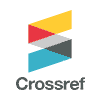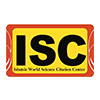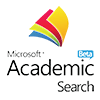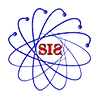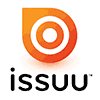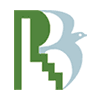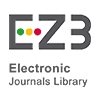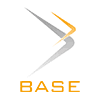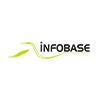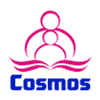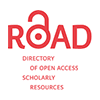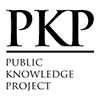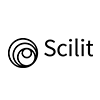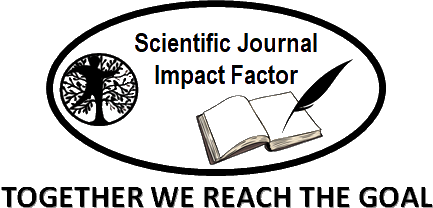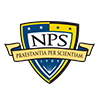Effects of Critical Reading Instruction on Students’ Reading Awareness in EFL Class: Grade 11 Kaso Ghimbi High School in Focus
Abstract
This study aims to examine the effects of critical reading instruction on students’ reading awareness in an EFL classroom. The design of this study is quasi experimental especially non randomized control group design. For gathering data pre-test and post-test questionnaires were used. The setting of the research was Kaso secondary school grade 11 Gimbi Town, Oromiya region Ethiopia. Questionnaire was used as a tool to collect data for the study. The researcher tested the validity and reliability of the tool before using it for data collection. The data obtained are then tested using a t-test. The result of the research shows that the awareness of the experimental group students who were leaning by critical reading instruction approach is higher than those students who did not learn by critical reading instruction approach. Therefore, it could be recommended that subject area teachers should give their students additional chance of practicing the critical reading strategies instead of using only limited strategies. Further, it is desirable to recommend some areas that need investigation.
Keywords
Full Text:
PDFReferences
Abiyu (2007). Effects of teacher mediation on students’ concepts and approaches to reading. VDM Verlag. GondarYunversity.
Albeckay, E. M. (2013). Developing Reading Skills through Critical Reading Programme amongst Undergraduate EFL Students in Lybia.Elvisier, 175-181.
Alderson, J. C. (2005). Diagnosing Foreign Language Proficiency: The Interface between Learning and Assessment. New York: The Tower Building.
Allwright, D. & Bailey, K. (1991). Focus on the language classroom: An introduction to classroom research for language teachers. Cambridge: Cambridge University Press.
AnderewBauld. (2022). Ed. Magazine, the School Library Journal, Hand out, Harvard Unversity.
Anderson, L.et.al. (2001). A taxonomy for learning, teaching, and assessing: a revision of Bloom’s taxonomy of educational objectives. 41(4),352. Retrieved from http://books.google.com/books?id=JpkxaqaamaaJ&pgis=1.
ArifSaricoban .(2002). Reading Strategies of Successful Readers through the Three Phase Approach. The Reading Matrix Vol.2, No.3.
Armstrong, T. (1999). Seven kinds of smart: Identifying and developing your multiple intelligences. New York: Penguin Putnarn, Inc.
Asilioglu, B. (2008). The importance of critical reading for cognitive learning and the ways to improve it.Dicle University Journal of ZiyaGokalp Faculty of Education, 10, 1-11
Bizuwork (2018), Assessing factors affecting students’ reading comprehension: the case of grade 11 students in Chelenko preparatory school, in east Harargie, Haramayauniversity, Unpublished.
Brookfield, S. (2010). Developing critical thinkers. Baltimore. MD: Laureate Education, Inc. Sage Publications.
Creswell, J. W. (2009). Research design qualitative, quantitative and mixed method approaches. University of NEBRASAKA-LINCOLN third edition.
Creswell, J. W. (2014). Research design qualitative, quantitative and mixed method approaches. London, England: SAGE.
Do rnyei, Z. (2007). Research methods in applied linguistics. Oxford: Oxford University Press.
Dombey, H. (2010). No Quick Fix: Rethinking Literacy Programs in America’s Elementary Schools. Literacy, 44(1), 47.
Fairclough,N. (2013). Critical discourse analysis: The critical study of language. London, England: Routledge.
Fox, N.J. (2008) Post-positivism. In: Given, L.M. (ed.) The SAGE Encyclopaedia of Qualitative Research Methods. London: Sage.
Grabe, W. P., &Stoller, F. L., (2019). Teaching and researching: Reading. (3rd ed.). Routledge.
Grabe, W., &Stoller, F. (2013). Teaching and researching: Reading (2nd ed.). New York: Routledge.
Guba, E. G. (1991). The alternative paradigm dialog. In E. G. Guba (Ed.), The paradigm dialog, pp. 17-30. Newbury Park, CA: Sage.
Guba, E. G., & Lincoln, Y. S. (2005). Paradigmatic controversies, contradictions, and emerging confluences. In N. K. Denzin& Y. S. Lincoln, The Sage handbook of qualitative research, (3rd edition), pp. 191-215. Thousand Oaks, CA: Sag.
Hesham S. (2005). Teaching Reading Comprehension ESL/EFL Learners: The Reading Matrix Vol. 5, No. 2. Hedge, T. (2003). Teaching & learning in the Language Classroom. UK: OUP.
Horkheimer,(1972). CRITICAL THEORY, The Continuum Publishing Company 370 Lexington Avenue, New York, NY 10017 New Work.
Kurland, D.(2000).Critical reading and critical thinking. 8(July), 104–108. https://doi.org/10.1016/S1607-551X(08)70131-1.
Maltepe, S. (2016).An analysis of the critical reading levels of pre-service Turkish and literature teachers. Eurasian Journal of Educational Research, 63, 169-184, http://dx.doi.org/ 10.14689/ejer.2016.63.10.
Ministry of Education.(2019). Education and Training Policy of Ethiopia. Addis Ababa.
Oxford, R. (1990). Language learning strategies: What every teacher should know. Boston, MA: Heinle and Heinle.
Ridge, N., Kippels, S., & Farah, S. (2017). Curriculum development in the United Arab Emirates. Policy Paper, 18(1), 1-17.
Shao X P.(2018). An analysis of Critical Reading ability Test of National Paper I of College.
Tan, H. S. (2023). Critical Reading Skills in English of Incoming Grade 10 Learners: An Analysis and Interpretation. International Journal of Multidisciplinary: Applied Business and Education Research. 4(10), 3766 – 3776. doi: 10.11594/ijmaber.04.10.27.
Wallace, C. 2001. “Reading” in carter, R. and Nunan, David (eds.). The Cambridge Guide to Teaching English to speakers of other languages Teaching Language as Communication. Cambridge: Cambridge University press.
Wallace, M. & Wray, A. (2011). Critical reading and writing for postgraduates. Sage.
Wang Xiaocheng.(2019). Characteristics of Reading Literacy Assessment in PISA2018. Journal of Capital Normal University: Social Science Edition (3),9. [19].
Wilson, K. (2016). Critical reading, critical thinking: Delicate scaffolding in English for Academic Purposes (EAP). Thinking Skills and Creativity, 256-265.
Yenus, N (2017). Investigation of teachers’ teaching instructions in reading comprehension.Bahir Dar UniversityPhd dissertation; Journal PASAA December 2017 volume 54.
DOI: http://dx.doi.org/10.18415/ijmmu.v12i9.7030
Refbacks
- There are currently no refbacks.
Copyright (c) 2025 International Journal of Multicultural and Multireligious Understanding

This work is licensed under a Creative Commons Attribution-NonCommercial-NoDerivatives 4.0 International License.
https://ijmmu.com
editor@ijmmu.com
facebook.com/ijmmu
Copyright © 2014-2018 IJMMU. All rights reserved.






